Good afternoon my fellow HOTHkateers, today we have another treat for you to keep you updated on the wonderful carnival that is Google, specifically what’s happening with Google’s local search results.
We’ll be breaking down the latest changes as well as some thoughts into where Google is going in the future – And what you should do to keep up!
Let’s get into it:
The Google 3-Pack (Snack Pack) Local Update
Google has recently updated their results to get rid of what used to be the very common local 7-pack and replace it with a new 3 pack results.
It looks like this:
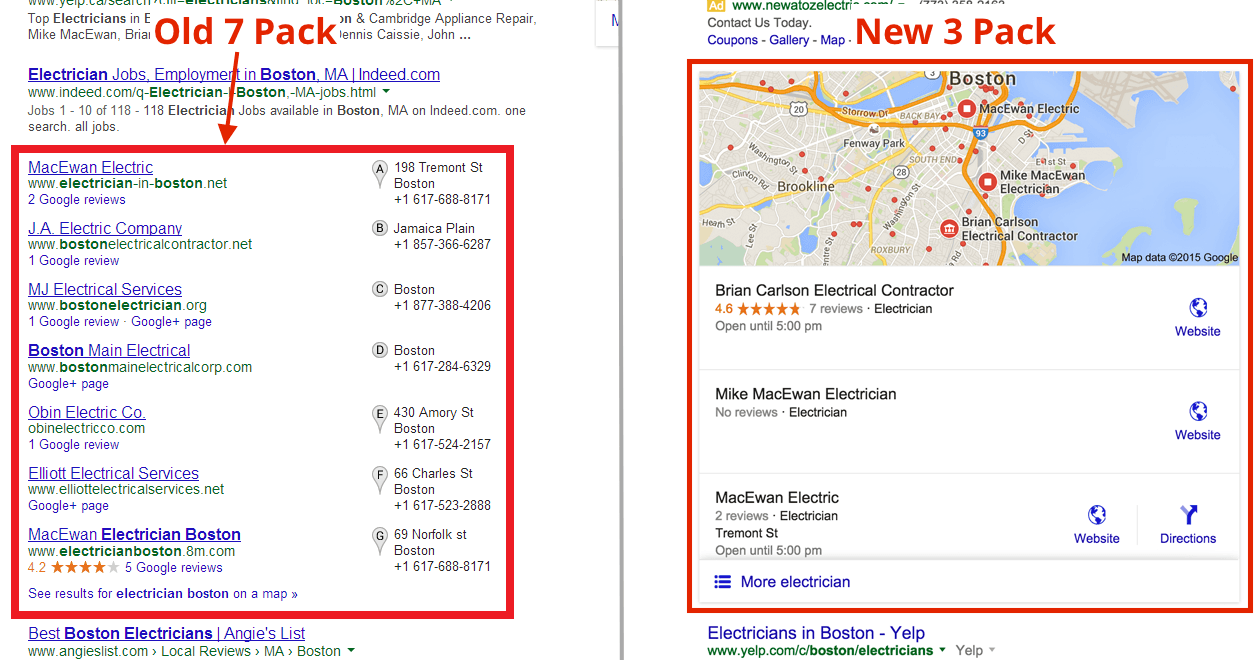
Google changed from the local 7 pack to the new 3 “snack pack”
Essentially, it cuts off anyone that was below the top 3 in the local pack.
On top of that, you’ll notice some other key differences:
- Phone number and address are removed (Wut?)
- Google+ links are removed (Google is de-associating Google+)
- When you click the name, instead of going to the end website, like you used to, it takes you to what looks like a Google Maps page
Why did Google do this?
We can’t say for sure, but taking a look at what else is going on in Google land we might make some assumptions.
1. Google Wants The Local Services Market
If you’ve been keeping up with the news lately, it’s obvious that Google wants in on the local services market. First, Google invests $100 million into Thumbtack, then they hire the team of now defunct Homejoy to build out their own platform.
Other big players like Amazon are getting in the game, who recently launched Amazon Home Services… and ya know that Google just can’t let Amazon win.
2. Google wants more money by controlling the process
Gotta keep those investors happy right? Adwords isn’t enough, so Google needs to control all the leads.
Well yeah, Google makes money by keeping users in the search results clicking their ads. The more they can do that, the more money they can make.
Check out this case study by Casey Meraz at Juris Digital where shows where users are clicking.
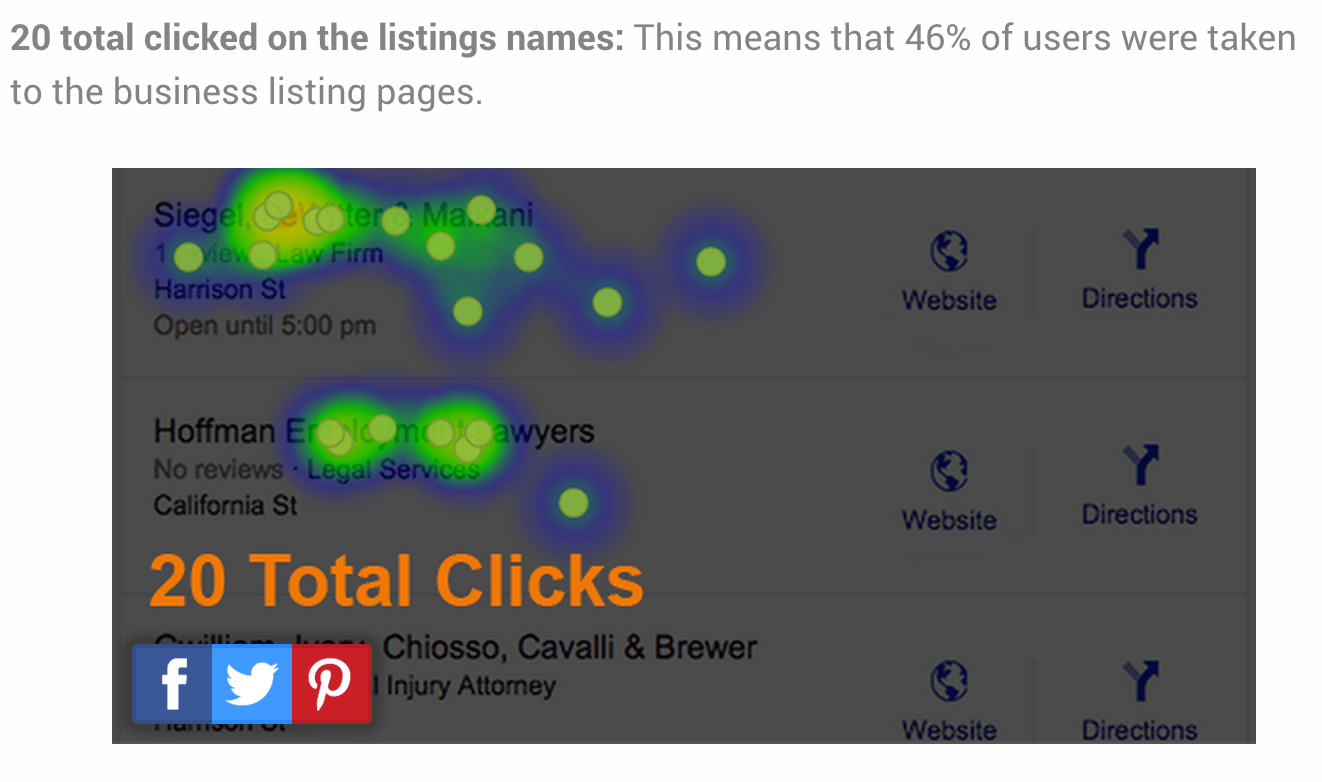
He concluded that 46% of people are clicking on the local results’ businesses name…
Here’s the kicker: One of the biggest differences between the old results and the new is that users used to click the name of the company and go directly to the homepage, therefore sending users away from Google.
Now in contrast, clicking the name takes the user to ANOTHER Google page.
The more page views, the less users need to visit the end site. Google can also make more money by controlling the whole process.
[Edit] While Casey concluded that most users are clicking on the local result’s business name, another 3 pack case study by Mike Ramsey at Nifty Marketing concluded that the organic listings right below the 3 pack are generating the most clicks.
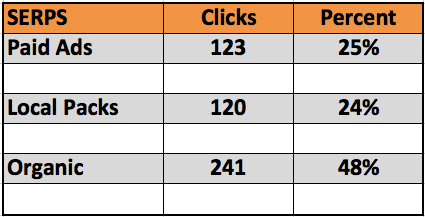
His conclusion? Time to focus on organic listings more than ever.
Click studies will vary from serp to serp, and with limited data it’s hard to tell, but still interesting to see some real data behind these claims.
3. Google is just making leeway for more ad types.
Google recently has been testing the home services ad types, they look like this:
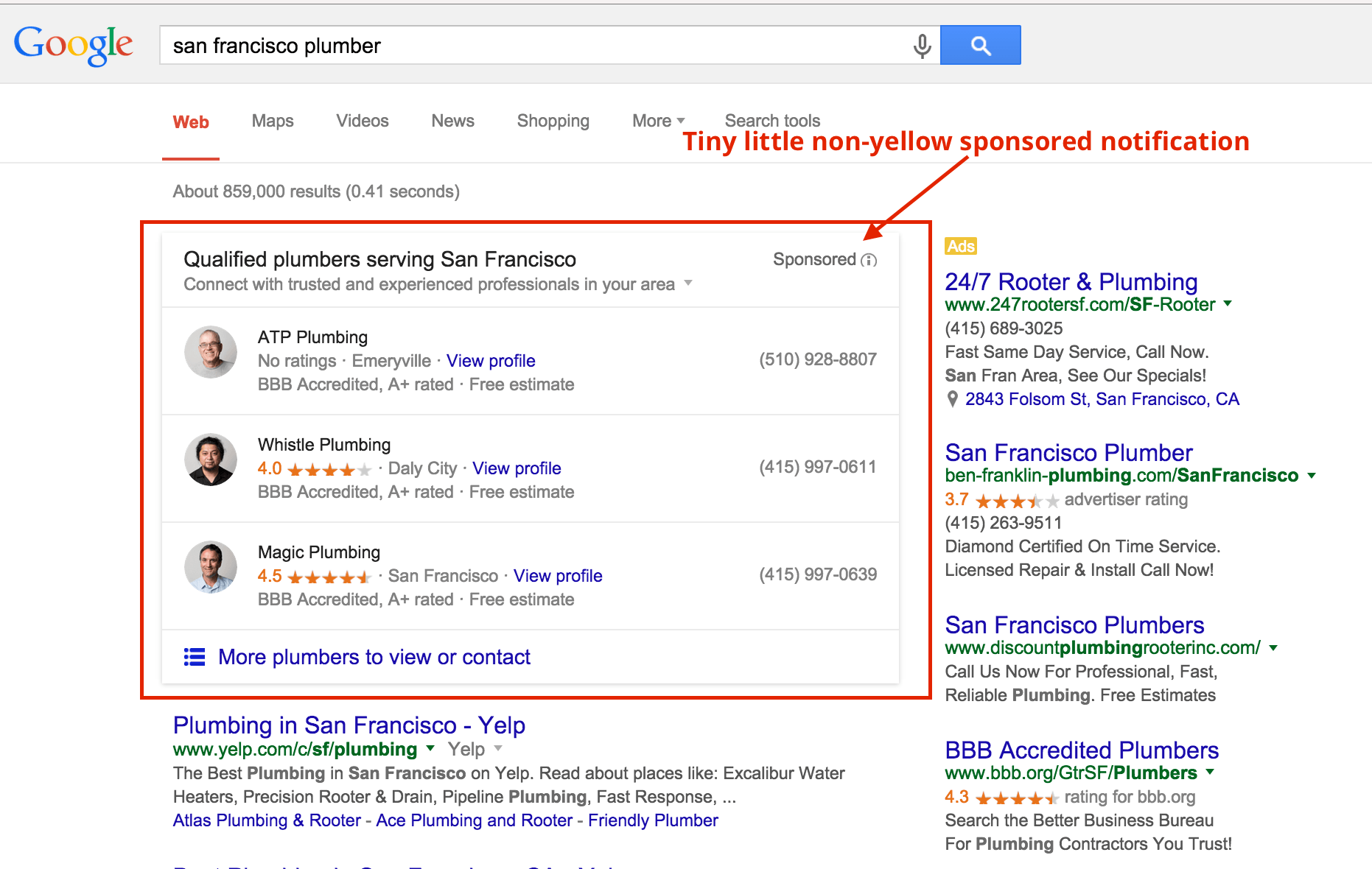
Awful similar to the local 3 pack huh?
We don’t know what the future holds for these types of ads, but the traditional yellow signaling that Google had with adwords is getting replaced with just a small little grey circle that tells people they are ads.
The perfect combo – pay to play that looks like organic results. Can you hear the dollars ringing now?
Hypocrisy
What’s funniest about this is the hypocrisy of Google.
Google hates scraping – taking information from other pages and publishing it on your page, and even bans websites that do this.
They regularly block IPs that scrape Google (resulting in lots of rank trackers shutting down) around that time.
Even Google content guidelines say you need to stay clear of scraping:
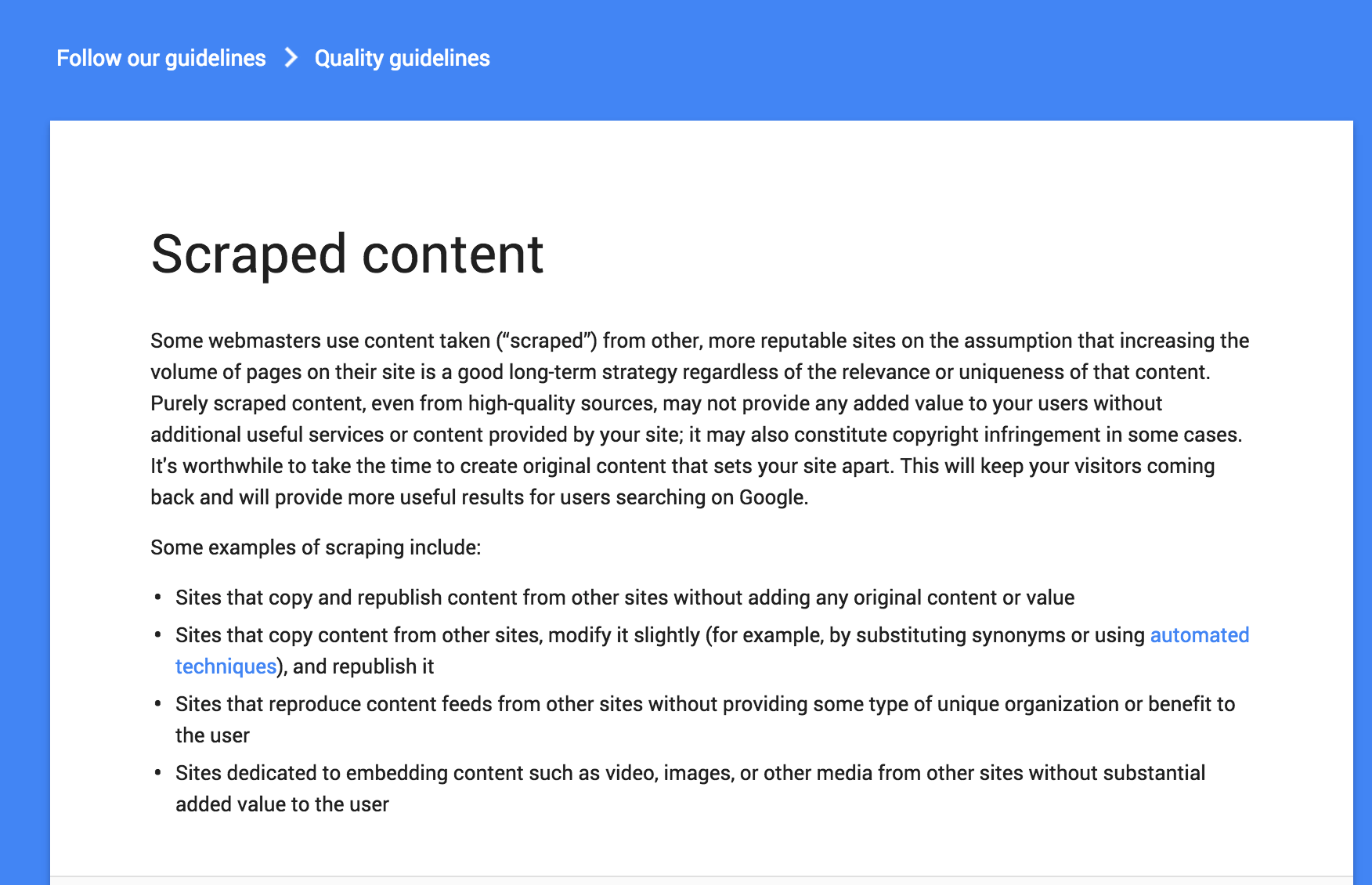
Well, at least they hate other people scraping, but for Google itself.. that’s fine.
Google is the worlds biggest scraper. Hilariously shown in this tweet:
.@mattcutts I think I have spotted one, Matt. Note the similarities in the content text: pic.twitter.com/uHux3rK57f
— dan barker (@danbarker) February 27, 2014
(*this search result has been since updated)
But why would Google be a scraper?
Check out these screenshots of how Google wants to handle the entire lead transaction (this exists as the new home service ad types).
If no one ever visits the end-users site, they can control everything (they control the leads, they can sell the leads).
img src=”https://www.thehoth.com/wp-content/uploads/2015/08/Screenshot-2015-08-11-11.24.04.png” alt=”Google lead capture” width=”2544″ height=”1374″ class=”size-full wp-image-3008″ />
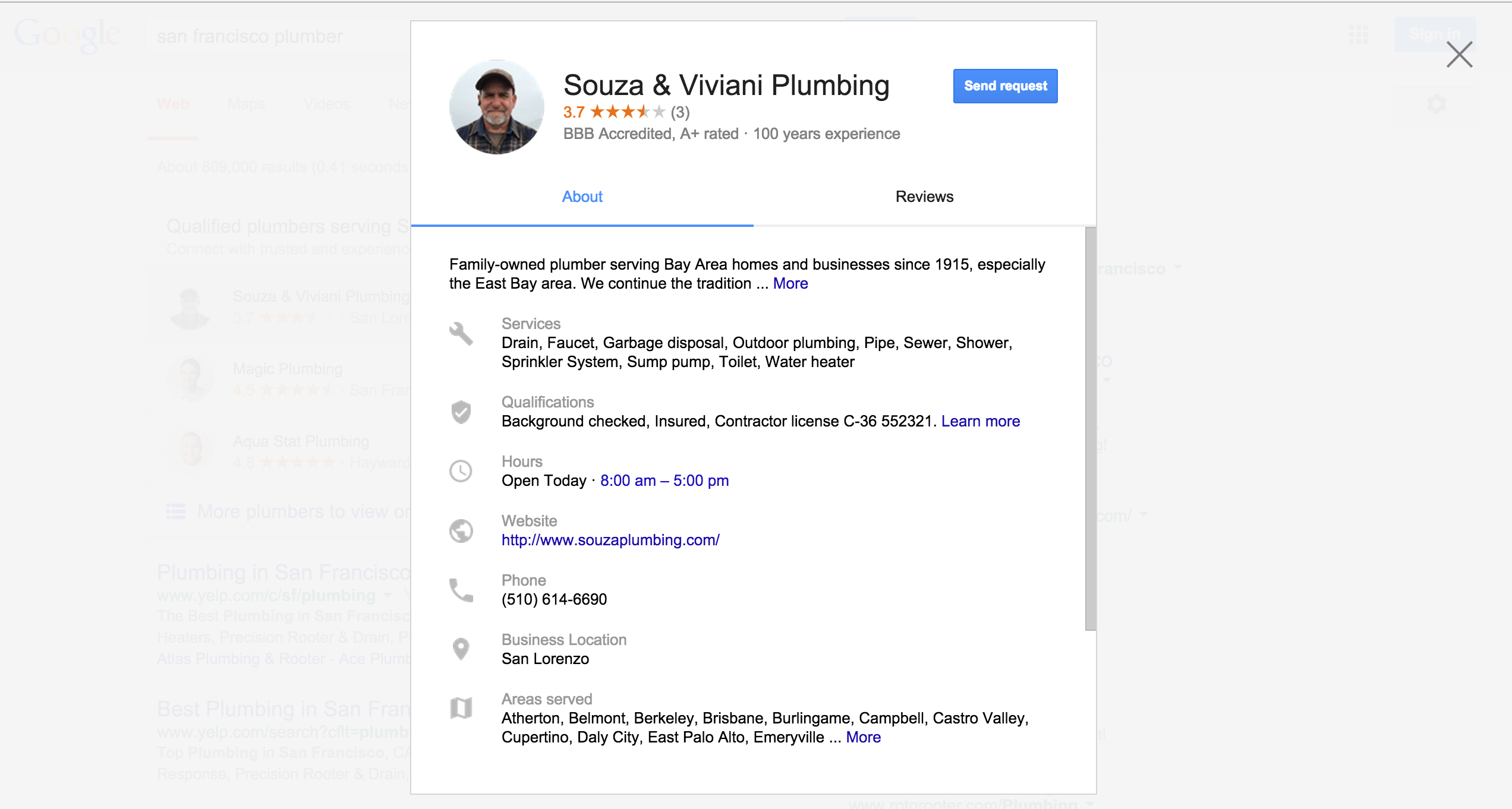
img src=”https://www.thehoth.com/wp-content/uploads/2015/08/Screenshot-2015-08-11-11.19.51.png” alt=”Google collecting $$ for leads ” width=”2556″ height=”1376″ class=”size-full wp-image-3010″ />
I don’t think google actually wants you to go to the business’ website. If they can get all the business’ content into the search results, they can be the middle man for everything.
They can keep users on the search results, sell the leads to the advertisers right from the easy-google-contact form…
They can control all the money, all the transactions.
Google knows this works, and they’ve been trying to include more and more data right into the search results to keep people on the page.
On another note, with this new ad type, Google’s results are super top heavy with ads, something they also say is not cool… for anyone except themselves. They even released a Google update that will demote pages for doing this back in 2012:
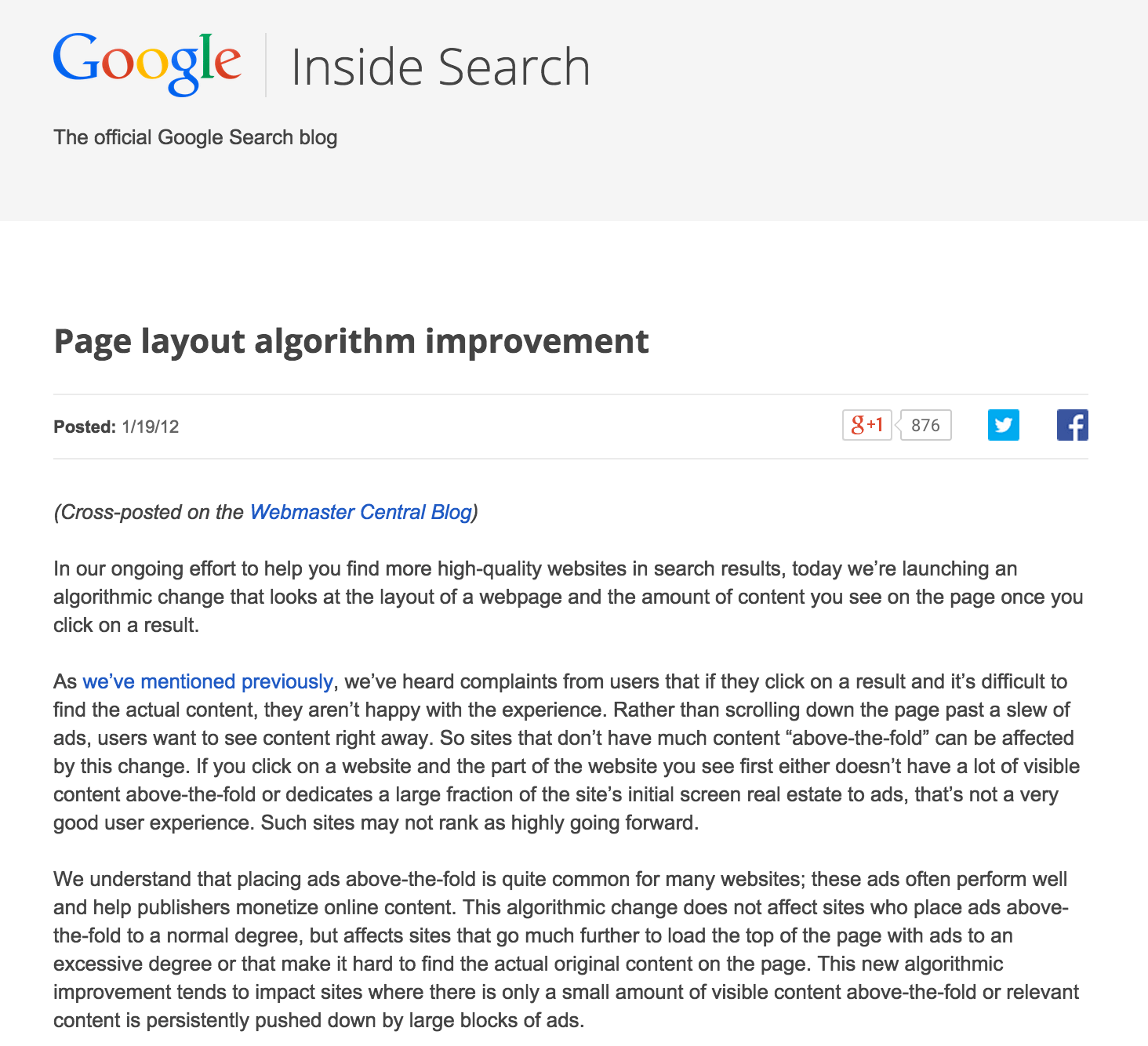 <
<
(For more Google updates – click here)
But Google pummels 70% of the page with ads… haha. It works.
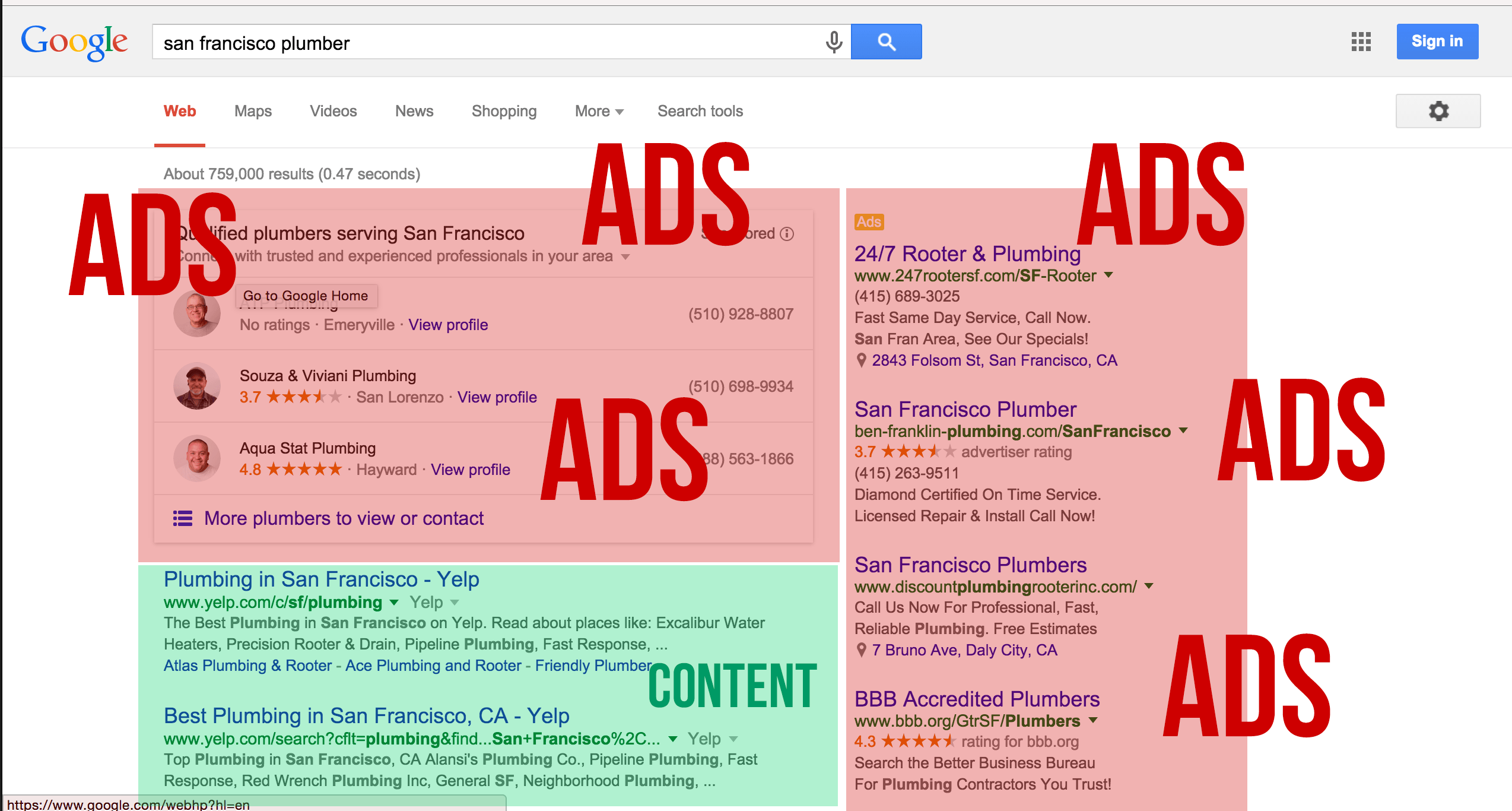
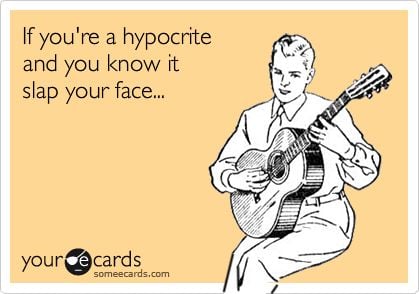
So what are we to do?
This article makes a lot of assumptions, and the only thing that we’ve historically know for sure is that local changes.
One major thing to point out is that nothing changed algorithmically with this update. There are no new ranking factors, meaning that if you ranked 1-3 before, you continued ranking 1-3, so all the local strategy that we advocate is still accurate and up to date.
With that said, at this point, if you’re not top 3 you’re going to have to step it up! (You have to rank in the top 3 locally to even be shown).
This means making sure you have good optimization on your GMB listing, good local citations, and a strong organic presence.
(If you want an in depth view of how the whole local ecosystem works, you can check out our free 20 min local seo webinar here)
And as always, we’ll continue keeping you up to date with the Google Alphabet circus.
Cheers,
The HOTH Crew
P.S. Have you signed up for a HOTH account yet? You can get access to SEMRush data for free, plus manage all your link building in one place. Click here to sign up (free).



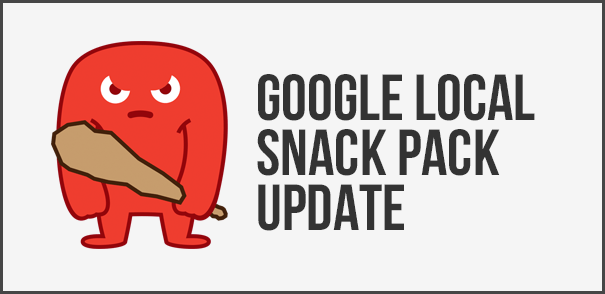





I swear Google changes its mind on things more than I change underwear lol.
Great article thank you for the update!!
Hey, Clayton,
Your article is insightful, but overlooks one thing.
(I thought this ONE THING was the reason that they changed to 3-Pack.)
When I’m talking with clients, I frequently pull up a search — like “emergency plumbers in Waco Texas” — and point out to my prospect that of the people who search and click, that two-thirds click on what they see on the screen without scrolling.
And then I count the ads — usually about seven — and then count the organic results (including maps listings) — and there are usually about three.
But by moving the little map away from the right column, more ads become visible on the right, and because the little map is now in the left column, less organic listings appear on the left.
Although it varies, since this change, the percentage of the first screen (without scrolling), has changed from 65%-70% to a new 70%-90%.
In other words, just by using geography of where the little map is placed, google’s ads went from 70% average to 80% average.
Now, since Google’s revenues are 60 $Billion per year, and 96% of that income comes from these ads that we see, just by rearranging screen real estate, Google will probably add another $6Billion to $7Billion annually, because most people click on what they see without scrolling. In other words, the barrier of working the scroll bar is enough to prevent most people from seeing anything but this preponderance of google ads.
Now, they’re a business, out to make money, and so it doesn’t really make me mad. They’re like the folks at the supermarket who give you a free cookie (the free search) in hopes you’ll buy a bag of the cookies (ie: click on an ad). You and me would probably do the same.
But I think the #1 reason they made the change is simple — to show more ads.
And then, like you say, with the change in the 3-pack where you click the name to go to another Google page, it opens the door to more ads later.
(Google always follows the same path: offer a free service till mucho traction, then place ads on those pages. Did it with search, did it with gmail. Expect to see it on maps.)
Just my 2 cents.
— Arthur Cronos
Voltos Industries
http://MedfordSEO.com
That’s a fantastic observation Arthur – thanks so much for pointing it out!
Great addition to this article Arthur, thanks!
Grr Google. But you know.. we’ll figure a way around it ! I don’t really have anything sophisticated to say about it, but make sure you’re crushing local. For me, one of my companies is an actual physical retail location, and we have like 18, 5 star reviews. We also have an authoritative local blogger linking to us all the time. The game really might shift to: ensure you’re in the top 3.
Thanks for the update Arthur. Local search was a way for some of my clients to get in the Google search game… looks like that is going to get much harder. Damn you Google.
Such is the world of Google. Do as I say, not as I do.
Sad, really. No matter what the Google algo update du jour is – one thing is utterly consistent: Reduced organic visibility.
It’s an ENDLESSLY shrinking noose we like to think we can still survive in. Why the corporate, web design and SEO community doesn’t *revolt* en mass and turn their backs on Google, switch to DuckDuckGo or any other search provider once and for all is beyond me.
It really is crazy how they can do whatever they want by virtue of total domination.
Arthur’s comment seems valid to me, and I have mixed emotions about it being motivated by more ad revenue for Google.
I get that they’re a business and that means more for them; I just want to be sure that we’re not losing out as local businesses or consumers from this decision. Personally, I don’t like the ads, and it’s a pain to have to navigate around them all the time…
Hopefully it will have a net positive effect 🙂
User-Agent: Googlebot
Disallow: /
its a crumby search engine. Use bing.
Switching to DuckDuckGo sounds good in theory, but first you need to convince the public and I don’t see that happening anytime soon.
I absolutely hate Google, but unfortunately they are a necessary evil. I just did a quick check on a few of my client’s local rankings and ironically, they have actually improved for some of them. I was having a hard time cracking the top 7 with some and now they are in the top 3. Go figure. I’m not sure what changed, but I’m not going to argue with them.
Sadly, the Google update too frequently, all too late into the top three to update will return to you before liberation, thanks for sharing!
This totally bites. I have several local clients who were/are killing it with Local. They were at top #5 in Maps, still #1 for Organic. But this sucks. 80% ads? Why cant they play by their own rules?
Can we boycott them, all switch to Bing or a new search engine?
I hope another search engine comes along soon and kicks their butts!
John
SEO Specialist
Interestingly, many of my clients are ranking BETTER organically after the change, especially if they were in the 7-pack before but are no longer in the 3-pack. For instance, for one particular keyphrase I couldn’t for the life of me get this guy on Page 1. He kept hovering on Page 2 for months. But now he’s been #1 on Page 1 for the past few days! I’m seeing improvements like this across the board with other clients as well. Keeping my fingers crossed that it’ll last and it’s not some kind of temporary consolation prize!
Any chance Google would place the least optimized businesses in the 3-pack knowing they don’t care about their SEO and are least likely to pay for ads. I have seen my business who is way more optimized than our competition, drop in the 7-pack and I am more likely to pay for ads than my competition.
Talk about hypocrisy at its best eh! Let’s just wait and hope for the best going forward.
this is what we all pay for ads PPC this is the only way to get business
I am a big fan of a diversified strategy. It’s not only SEO, or only PPC, or only Facebook Ads. Do everything and measure ROI.
Sounds like it’s time to start spreading the SEO to Bing. I hear their search market share has increased over the past few years.
I wonder if these local SEO enhancements are also being implemented in foreign markets…
Yes David i can confirm that foreign markets are seeing this too. Its just funny. google
Pure Pure hypocrisy! I wonder why Google still dominates the search engines.
thanks for sharing this amazing post